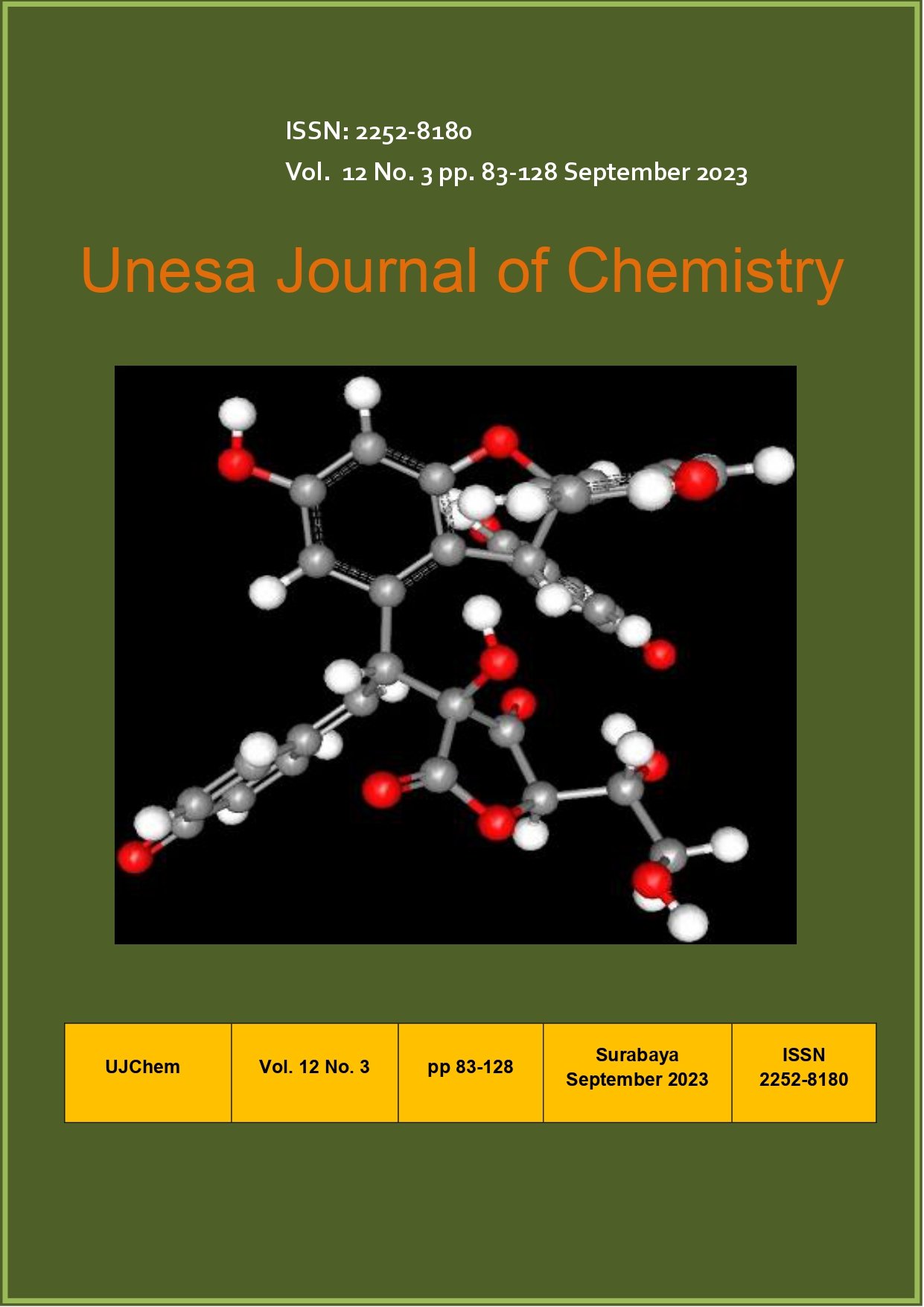PREPARATION AND CHARACTERIZATION OF ZNO/TIO2 NANOPARTICLES WITH PAPAYA LEAF EXTRACT (CARICA PAPAYA L)
Main Article Content
Abstract
Green synthesis of metal nanoparticles has become an interesting research area because it offers an environmentally friendly and cost-effective alternative. Green synthesis was successfully carried out using papaya leaf extract (Carica papaya L) where polyphenol compounds were responsible as reducing agents and capping agents. The aim of this research is to determine the characteristics of nanoparticles that have been successfully synthesized using the sol-gel method. ZnO/TiO2 (ZT) nanoparticles have been successfully synthesized using the green synthesis method with papaya (Carica papaya L.) as a reducing agent. FTIR results from ZnO2 nanoparticles produced an absorption pattern of 880.18 cm-1; 850.43 cm-1; 868.57 cm-1; and 874.76 cm-1 is the stretching vibration of Zn-O-Ti. The particle size of ZnO/TiO2 nanoparticles in variations ZT-0, ZT-1, ZT-3, ZT-5, and ZT-7 is 10.469 nm; 10.98nm; 10.21nm; 11.65nm; and 11.04 nm.

